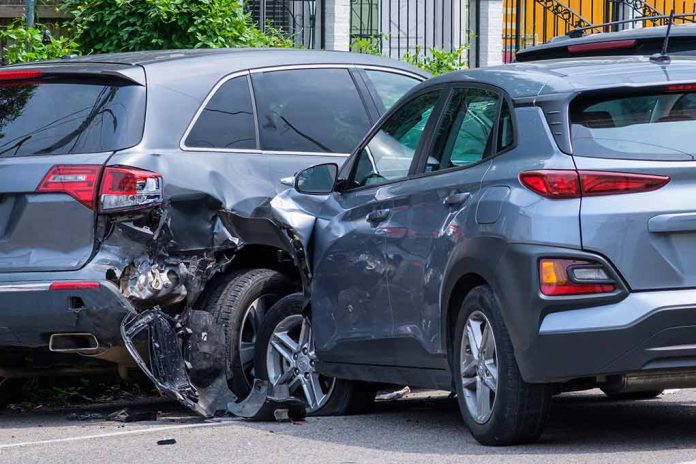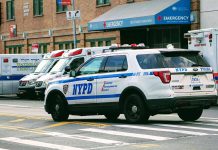
U.S. traffic deaths surge to alarming levels, surpassing pre-pandemic figures and outpacing other developed nations.
At a Glance
- U.S. traffic deaths have reached crisis levels, with pedestrian fatalities up 77% in the last decade.
- Larger vehicles, speeding, and impaired driving contribute significantly to the rising death toll.
- The U.S. has the highest motor-vehicle death rate among developed countries.
- Experts call for a “safe systems” approach to redesign roadways for safety over speed.
- Federal oversight inadequacies have been identified as a major contributing factor.
A Growing Public Health Crisis on U.S. Roads
The United States is facing a dire situation on its roadways as traffic-related deaths continue to climb, outpacing figures from before the global health crisis and surpassing those in other developed nations. This alarming trend has prompted National Transportation Safety Board (NTSB) Chair Jennifer Homendy to declare it a growing public health crisis, highlighting the urgent need for comprehensive safety measures.
The statistics paint a grim picture. In 2021, the number of pedestrians killed by cars reached a staggering 7,600, marking a 77% increase over the past decade. Cyclists and pedestrians have been particularly vulnerable, with 2021 recording the highest number of fatalities in over four decades. These figures underscore the severity of the situation and the pressing need for immediate action.
The United States must address the growing public health crisis over high traffic deaths that remain significantly above pre-COVID-19 levels, the head of the National Transportation Safety Board said Tuesday. https://t.co/l0jfmEq743 https://t.co/l0jfmEq743
— Reuters Health (@Reuters_Health) November 19, 2024
Factors Contributing to the Crisis
Several factors have contributed to this alarming rise in traffic-related deaths. The increasing prevalence of larger vehicles like SUVs on American roads has made collisions more dangerous for pedestrians and cyclists. These vehicles’ size and design often result in more severe injuries during accidents. Additionally, the pandemic exacerbated the issue as emptier roads led to increased speeding and reckless driving behaviors.
“While it appears that the changing vehicle fleet is playing a role in a recent surge in pedestrian and cyclist fatalities, the major contributors to overall fatalities are the usual suspects—speed, impaired driving, and failures to buckle up,” says Joe Young, a spokesperson for IIHS.
Inadequate federal oversight has also been identified as a significant factor in this crisis. A recent crash analysis revealed shortcomings in the Federal Motor Carrier Safety Administration’s (FMCSA) oversight, highlighting the need for more stringent regulations and enforcement measures to ensure road safety.
Comparison with Other Developed Nations
The United States’ road safety record stands in stark contrast to that of other developed nations. NTSB Chair Jennifer Homendy emphasized this disparity, stating, “Unlike most developed nations, U.S. roadways have grown more deadly over the last several decades. By raw numbers, the U.S. has more motor-vehicle deaths than any other developed country. We also have the highest death rate.”
This stark contrast underscores the urgent need for the United States to reassess its approach to road safety and implement proven strategies that have been successful in other countries.
Proposed Solutions and Path Forward
Experts are advocating for a “safe systems” approach to redesign roadways, prioritizing safety over speed. This strategy has shown promising results in countries like Sweden, the Netherlands, and the United Kingdom, where significant reductions in traffic deaths have been achieved. Recommendations include reducing speed limits in urban areas and investing in safer transit infrastructure.
The U.S. Department of Transportation has begun adopting the safe systems model, supported by funding from the Bipartisan Infrastructure Law. This approach aims to create a more comprehensive and effective strategy for reducing traffic-related deaths and injuries.
Local initiatives, such as the Safe Oakland Streets initiative, are also emerging to address traffic safety and equity concerns in vulnerable communities. These efforts demonstrate a growing recognition of the need for targeted, community-based solutions to complement broader national strategies.
As the nation grapples with this escalating crisis, it is clear that a multifaceted approach involving government action, infrastructure improvements, and individual responsibility will be necessary to reverse the trend of rising traffic-related deaths and create safer roads for all Americans.








